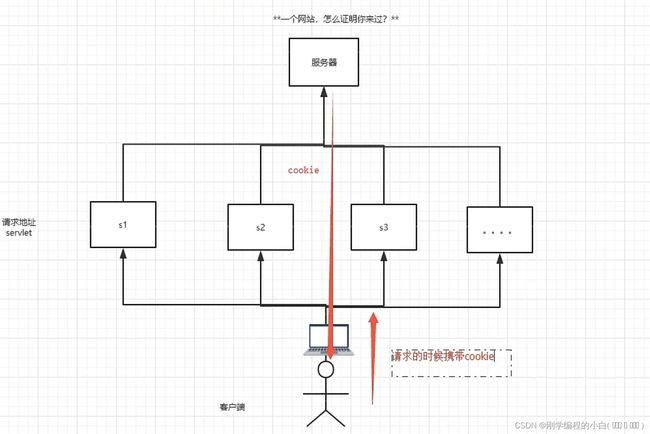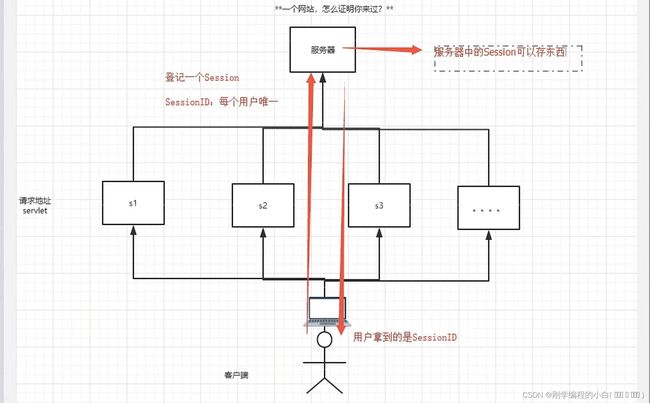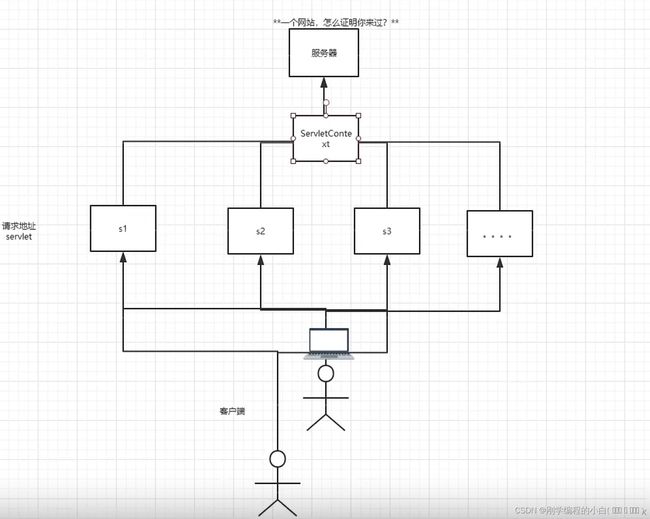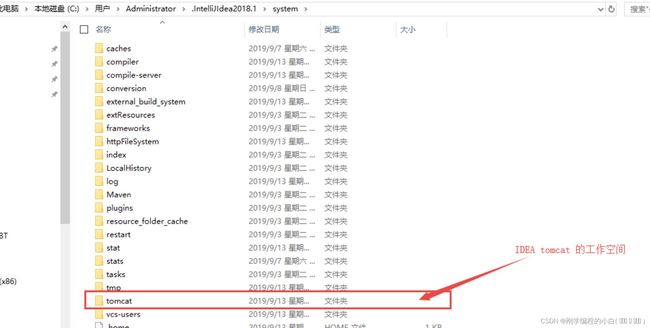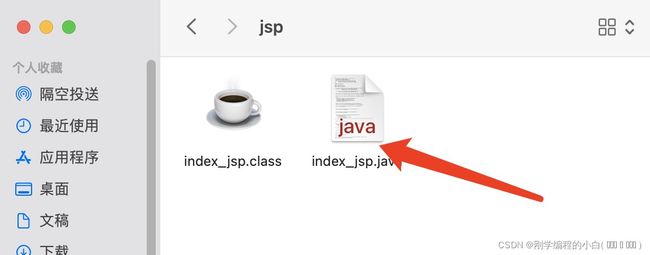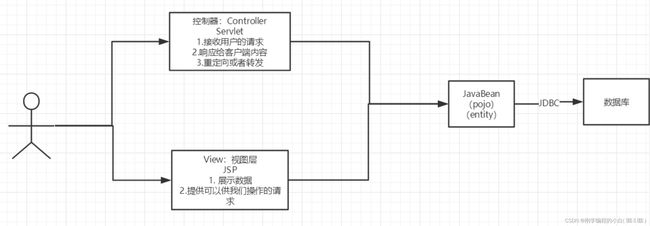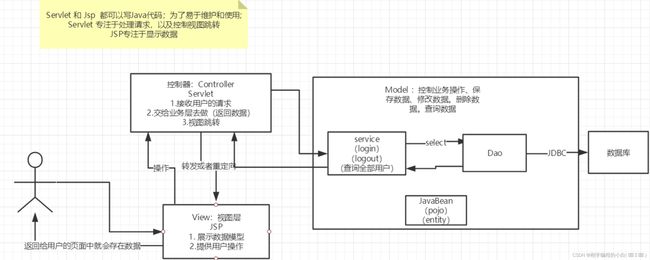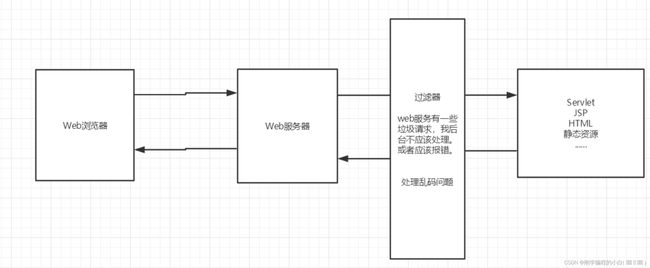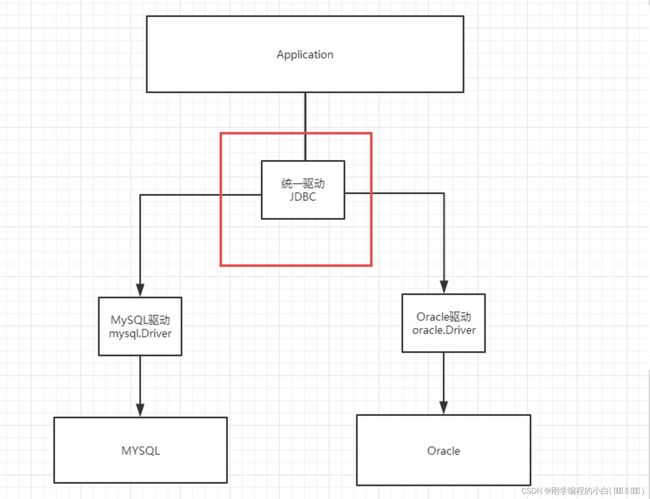狂神。JavaWeb学习(2)
7、Cookie、Session
7.1、会话
**会话:**用户打开一个浏览器,点击了很多超链接,访问多个web资源,关闭浏览器,这个过程可以称之为会话。
**有状态会话:**一个同学来过教室,下次再来教室,我们会知道这个同学,曾经来过,称之为有状态会话。
你能怎么证明你是西开的学生?
你——西开
- 发票 西开给你发票。
- 学校登记 西开标记你来过了。
一个网站,怎么证明你来过?
客户端——服务端
- 服务端给客户端一个信件,客户端下次访问服务端带上信件就可以了; cookie
- 服务器登记你来过了,下次你来的时候我来匹配你; seesion
7.2、保存会话的两种技术
cookie
- 客户端技术 (响应,请求)
session
- 服务器技术,利用这个技术,可以保存用户的会话信息? 我们可以把信息或者数据放在Session中!
常见常见:网站登录之后,你下次不用再登录了,第二次访问直接就上去了!
7.3、Cookie
- 从请求中拿到cookie信息
- 服务器响应给客户端cookie
Cookie[] cookies = req.getCookies(); //获得Cookie
cookie.getName(); //获得cookie中的key
cookie.getValue(); //获得cookie中的vlaue
new Cookie("lastLoginTime", System.currentTimeMillis()+""); //新建一个cookie
cookie.setMaxAge(24*60*60); //设置cookie的有效期
resp.addCookie(cookie); //响应给客户端一个cookie
cookie:一般会保存在本地的 用户目录下 appdata;
一个网站cookie是否存在上限!聊聊细节问题
- 一个Cookie只能保存一个信息;
- 一个web站点可以给浏览器发送多个cookie,最多存放20个cookie;
- Cookie大小有限制4kb;
- 300个cookie浏览器上限;
删除Cookie:
- 不设置有效期,关闭浏览器,自动失效;
- 设置有效期时间为 0 ;
编码解码:
URLEncoder.encode("秦疆","utf-8")
URLDecoder.decode(cookie.getValue(),"UTF-8")
package kuang;
import javax.servlet.ServletException;
import javax.servlet.http.Cookie;
import javax.servlet.http.HttpServlet;
import javax.servlet.http.HttpServletRequest;
import javax.servlet.http.HttpServletResponse;
import java.io.IOException;
import java.io.PrintWriter;
import java.util.Date;
//保存用户上一次访问的时间。
public class CookieDemo01 extends HttpServlet {
@Override
protected void doGet(HttpServletRequest req, HttpServletResponse resp) throws ServletException, IOException {
//服务器,告诉你,你来的时间,把这个时间封装成为一个信件,你下次来,我就知道你来了。
//解决中文乱码问题。
req.setCharacterEncoding("utf-8");
resp.setCharacterEncoding("utf-8");
resp.setContentType("text/html;charset=utf-8");
PrintWriter out = resp.getWriter();
//Cookie,服务器端从客户端获取。
Cookie[] cookies = req.getCookies();//这里返回值,说明Cookie可能存在多个。
//判断Cookie是否存在。
if (cookies!=null){
//如果存在怎么办。
out.write("你上一次访问的时间是:");
for (int i = 0; i < cookies.length; i++) {
Cookie cookie = cookies[i];
//获取Cookie的名字。
if (cookie.getName().equals("lastLoginTime")){
//获取Cookie中的值。
long lastLoginTime = Long.parseLong(cookie.getValue());
Date date = new Date(lastLoginTime);
out.write(date.toLocaleString());
}
}
}else {
out.write("这是您第一次访问本站!");
}
//服务器给客户端响应一个Cookie。
Cookie cookie = new Cookie("lastLoginTime",System.currentTimeMillis()+"");
//cookie有效期为1天。
cookie.setMaxAge(24*60*60);
resp.addCookie(cookie);
}
@Override
protected void doPost(HttpServletRequest req, HttpServletResponse resp) throws ServletException, IOException {
doGet(req, resp);
}
}
package kuang;
import javax.servlet.ServletException;
import javax.servlet.http.Cookie;
import javax.servlet.http.HttpServlet;
import javax.servlet.http.HttpServletRequest;
import javax.servlet.http.HttpServletResponse;
import java.io.IOException;
public class CookieDemo02 extends HttpServlet {
@Override
protected void doGet(HttpServletRequest req, HttpServletResponse resp) throws ServletException, IOException {
//创建一个cookie,名字必须要和要删除的名字一致。
Cookie cookie = new Cookie("lastLoginTime",System.currentTimeMillis()+"");
//将Cookie有效期设置为0,立马过期。
cookie.setMaxAge(0);
resp.addCookie(cookie);
}
@Override
protected void doPost(HttpServletRequest req, HttpServletResponse resp) throws ServletException, IOException {
doGet(req, resp);
}
}
package kuang;
import javax.servlet.ServletException;
import javax.servlet.http.Cookie;
import javax.servlet.http.HttpServlet;
import javax.servlet.http.HttpServletRequest;
import javax.servlet.http.HttpServletResponse;
import java.io.IOException;
import java.io.PrintWriter;
import java.net.URLDecoder;
import java.net.URLEncoder;
//中文数据传递。
public class CookieDemo03 extends HttpServlet {
@Override
protected void doGet(HttpServletRequest req, HttpServletResponse resp) throws ServletException, IOException {
//解决中文乱码问题。
req.setCharacterEncoding("utf-8");
resp.setCharacterEncoding("utf-8");
//Cookie,服务器端从客户端获取。
Cookie[] cookies = req.getCookies();//这里返回值,说明Cookie可能存在多个。
PrintWriter out = resp.getWriter();
//判断Cookie是否存在。
if (cookies!=null){
//如果存在怎么办。
out.write("你上一次访问的时间是:");
for (int i = 0; i < cookies.length; i++) {
Cookie cookie = cookies[i];
//获取Cookie的名字。
if (cookie.getName().equals("name")){
//System.out.println(cookie.getValue());
//解码
out.write(URLDecoder.decode(cookie.getValue(),"UTF-8"));
}
}
}else {
out.write("这是您第一次访问本站!");
}
//编码
Cookie cookie = new Cookie("name", URLEncoder.encode("德玛西亚","utf-8"));
resp.addCookie(cookie);
}
@Override
protected void doPost(HttpServletRequest req, HttpServletResponse resp) throws ServletException, IOException {
doGet(req, resp);
}
}
7.4、Session(重点)
什么是Session:
- 服务器会给每一个用户(浏览器)创建一个Seesion对象;
- 一个Seesion独占一个浏览器,只要浏览器没有关闭,这个Session就存在;
- 用户登录之后,整个网站它都可以访问!–> 保存用户的信息;保存购物车的信息……
Session和cookie的区别:
- Cookie是把用户的数据写给用户的浏览器,浏览器保存 (可以保存多个)
- Session把用户的数据写到用户独占Session中,服务器端保存 (保存重要的信息,减少服务器资源的浪费)
- Session对象由服务创建;
使用场景:
- 保存一个登录用户的信息;
- 购物车信息;
- 在整个网站中经常会使用的数据,我们将它保存在Session中;
使用Session:
package kuang;
import pojo.Person;
import javax.servlet.ServletException;
import javax.servlet.http.*;
import java.io.IOException;
public class SessionDemo01 extends HttpServlet {
@Override
protected void doGet(HttpServletRequest req, HttpServletResponse resp) throws ServletException, IOException {
//解决乱码问题
req.setCharacterEncoding("utf-8");
resp.setCharacterEncoding("utf-8");
resp.setContentType("text/html;charset=utf-8");
//得到session
HttpSession session = req.getSession();
//给session中存东西
session.setAttribute("name",new Person("德玛西亚",1));
//获取session的ID
String sessionId = session.getId();
//判断Session是不是新创建
if (session.isNew()){
resp.getWriter().write("session创建成功,ID:"+sessionId);
}else {
resp.getWriter().write("session已经在服务器中存在了,ID:"+sessionId);
}
//session创建的时候做了什么?
//Cookie cookie = new Cookie("JSESSIONID",sessionId);
//resp.addCookie(cookie);
}
@Override
protected void doPost(HttpServletRequest req, HttpServletResponse resp) throws ServletException, IOException {
doGet(req, resp);
}
}
package kuang;
import pojo.Person;
import javax.servlet.ServletException;
import javax.servlet.http.HttpServlet;
import javax.servlet.http.HttpServletRequest;
import javax.servlet.http.HttpServletResponse;
import javax.servlet.http.HttpSession;
import java.io.IOException;
public class SessionDemo02 extends HttpServlet {
@Override
protected void doGet(HttpServletRequest req, HttpServletResponse resp) throws ServletException, IOException {
//解决乱码问题
req.setCharacterEncoding("utf-8");
resp.setCharacterEncoding("utf-8");
resp.setContentType("text/html;charset=utf-8");
//得到session
HttpSession session = req.getSession();
Person person = (Person)session.getAttribute("name");
System.out.println(person.toString());
}
@Override
protected void doPost(HttpServletRequest req, HttpServletResponse resp) throws ServletException, IOException {
doGet(req, resp);
}
}
package kuang;
import javax.servlet.ServletException;
import javax.servlet.http.HttpServlet;
import javax.servlet.http.HttpServletRequest;
import javax.servlet.http.HttpServletResponse;
import javax.servlet.http.HttpSession;
import java.io.IOException;
public class SessionDemo03 extends HttpServlet {
@Override
protected void doGet(HttpServletRequest req, HttpServletResponse resp) throws ServletException, IOException {
HttpSession session = req.getSession();
session.removeAttribute("name");
//手动注销。
session.invalidate();
}
@Override
protected void doPost(HttpServletRequest req, HttpServletResponse resp) throws ServletException, IOException {
doGet(req, resp);
}
}
package pojo;
//新建一个person实体类。
public class Person {
private String name;
private int age;
public Person() {
}
public Person(String name, int age) {
this.name = name;
this.age = age;
}
public String getName() {
return name;
}
public void setName(String name) {
this.name = name;
}
public int getAge() {
return age;
}
public void setAge(int age) {
this.age = age;
}
@Override
public String toString() {
return "Person{" +
"name='" + name + '\'' +
", age=" + age +
'}';
}
}
会话自动过期:web.xml配置.
<session-config>
<session-timeout>1440session-timeout>
session-config>
8、JSP
8.1、什么是JSP
Java Server Pages : Java服务器端页面,也和Servlet一样,用于动态Web技术!
最大的特点:
- 写JSP就像在写HTML。
- 区别:
- HTML只给用户提供静态的数据。
- JSP页面中可以嵌入JAVA代码,为用户提供动态数据。
8.2、JSP原理
思路:JSP到底怎么执行的!
-
代码层面没有任何问题。
-
服务器内部工作:
tomcat中有一个work目录;
IDEA中使用Tomcat的会在IDEA的tomcat中生产一个work目录。(mac表示还有没找到!)
我的电脑地址:
/Users/wangcheng/apachetomcat9.0.60/work/Catalina/localhost/ROOT/org/apache/jsp
/index_jsp.java
发现页面转变成了java程序!
浏览器向服务器发送请求,不管访问什么资源,其实都是在访问Servlet!
JSP最终也会被转换成为一个Java类!
JSP 本质上就是一个Servlet.
//初始化
public void _jspInit() {}
//销毁
public void _jspDestroy() {}
//JSPService
public void _jspService(HttpServletRequest request,HttpServletResponse response){}
- 判断请求
- 内置一些对象
final javax.servlet.jsp.PageContext pageContext; //页面上下文
javax.servlet.http.HttpSession session = null; //session
final javax.servlet.ServletContext application; //applicationContext
final javax.servlet.ServletConfig config; //config
javax.servlet.jsp.JspWriter out = null; //out
final java.lang.Object page = this; //page:当前
HttpServletRequest request //请求
HttpServletResponse response //响应
- 输出页面前增加的代码
response.setContentType("text/html"); //设置响应的页面类型
pageContext = _jspxFactory.getPageContext(this, request, response,
null, true, 8192, true);
_jspx_page_context = pageContext;
application = pageContext.getServletContext();
config = pageContext.getServletConfig();
session = pageContext.getSession();
out = pageContext.getOut();
_jspx_out = out;
- 以上的这些个对象我们可以在JSP页面中直接使用!
在JSP页面中;
只要是 JAVA代码就会原封不动的输出;
如果是HTML代码,就会被转换为:
out.write("\r\n");
这样的格式,输出到前端!
8.3、JSP基础语法
任何语言都有自己的语法,JAVA中有。 JSP 作为java技术的一种应用,它拥有一些自己扩充的语法。(了解,知道即可!)Java的所有语法都支持!
- JSP表达式
<%-- JSP表达式
作用:用来将程序的输出,输出到客户端。
<%= 变量或者表达式 %>
--%>
<%= new java.util.Date() %>
- jsp脚本片段
<%--JSP脚本片段--%>
<%
int sum = 0;
for (int i = 0; i < 100; i++) {
sum += i;
}
out.println("Sum="+sum+"
");
%>
- 脚本片段的再实现
<%
int x = 10;
out.println(x);
%>
这是一个JSP文档
<%
int y = 10;
out.println(y);
%>
<%--在代码嵌入HTML元素--%>
<%--EL表达式(${i}显示不出来,不知道为啥。)--%>
<% for (int i = 0; i < 5; i++) { %>
Hello,World! <%=i%>
<% } %>
- JSP声明
<%!
static{
System.out.println("Loading Servlet!");
}
private int globalVar = 0;
public void kuang(){
System.out.println("进入了方法Kuang!");
}
%>
JSP声明:会被编译到JSP生成Java的类中!
其他的语法,就会被生成到 jspService方法中!
在JSP,嵌入Java代码即可!
<% %>
<%= %>
<%! %>
<%--注释--%>
JSP的注释,不会在客户端显示,HTML就会!(我的不知道为啥都不显示)
8.4、JSP指令
定制错误页面:
- 404.jsp页面:

- 500.jsp页面:
<%--../img/500.jpg 找不到图片,可能配置tomcat的时候路径加了/javaweb_jsp_war_exploded。--%>
 <%--
<%-- --%>
--%>
- 让他为一个错误页面:
<%@ page contentType="text/html;charset=UTF-8" language="java" %>
<%--定制错误页面(也可以在xml文件中配置)--%>
<%--<%@ page errorPage="error/500.jsp" %>--%>
<%--显示的声明这是一个错误页面--%>
<%--<%@ page isErrorPage="true" %>
<%@ page pageEncoding="UTF-8" %>--%>
Title
<%
int x = 1/0;
%>
- 也可以在xml文件中配置:
<error-page>
<error-code>404error-code>
<location>/error/404.jsplocation>
error-page>
<error-page>
<error-code>500error-code>
<location>/error/500.jsplocation>
error-page>
将两个页面合二为一。
<%@ page contentType="text/html;charset=UTF-8" language="java" %>
Title
<%--@ include会将两个页面合二为一。--%>
<%@ include file="common/header.jsp"%>
网页主体
<%@ include file="common/footer.jsp"%>
<%--jsp标签
jsp:include:拼接页面,本质还是三个。
--%>
<%--jsp标签--%>
网页主体
- header.jsp页面:
<%@ page contentType="text/html;charset=UTF-8" language="java" %>
我是头部
- footer.jsp页面:
<%@ page contentType="text/html;charset=UTF-8" language="java" %>
我是脚部
8.5、9大内置对象
- PageContext 存东西
- Request 存东西
- Response
- Session 存东西
- Application 【SerlvetContext】 存东西
- config 【SerlvetConfig】
- out
- page ,不用了解
- exception
request:客户端向服务器发送请求,产生的数据,用户看完就没用了。比如:新闻,用户看完没用的!
session:客户端向服务器发送请求,产生的数据,用户用完一会还有用,比如:购物车;
application:客户端向服务器发送请求,产生的数据,一个用户用完了,其他用户还可能使用,比如:聊天数据;
<%@ page contentType="text/html;charset=UTF-8" language="java" %>
Title
<%--内置对象--%>
<%
pageContext.setAttribute("name1","德玛西亚");//保存的数据只在一个网页中有效。
request.setAttribute("name2","艾欧尼亚");//保存的数据只在一个请求中有效,请求转发会携带这个数据。
session.setAttribute("name3","诺克萨斯");//保存的数据只在一次会话中有效,从打开浏览器到关闭浏览器。
application.setAttribute("name4","班德尔城");//保存的数据只在服务器中有效,从打开服务器到关闭服务器。
%>
<%-- 脚本片段中的代码,会被原封不动生成到.JSP.java中,
要求:这里面的代码,必须保证Java语法的正确性。--%>
<%
//从pageContext取出,我们通过寻找的方式来。
//从底层到高层(作用域):page-->request-->session-->application
//双亲委派机制。
String name1 = (String) pageContext.findAttribute("name1");
String name2 = (String) pageContext.findAttribute("name2");
String name3 = (String) pageContext.findAttribute("name3");
String name4 = (String) pageContext.findAttribute("name4");
String name5 = (String) pageContext.findAttribute("name5");//不存在
%>
<%--使用EL表达式输出 ${} --%>
取出的值为:
${name1}
${name2}
${name3}
${name4}
<%--显示null ,用El表达式写会不显示--%>
<%=name5%>
<%
//转发到pageDemo02后会显示name2、3、4的值。
pageContext.forward("/pageDemo02.jsp");
%>
这样写只会显示name3、4的值。
<%@ page contentType="text/html;charset=UTF-8" language="java" %>
Title
<%
//从pageContext取出,我们通过寻找的方式来。
//从底层到高层(作用域):
String name1 = (String) pageContext.findAttribute("name1");
String name2 = (String) pageContext.findAttribute("name2");
String name3 = (String) pageContext.findAttribute("name3");
String name4 = (String) pageContext.findAttribute("name4");
String name5 = (String) pageContext.findAttribute("name5");//不存在
%>
<%--使用EL表达式输出 ${} --%>
取出的值为:
${name1}
${name2}
${name3}
${name4}
<%--显示null ,用El表达式写会不显示--%>
<%=name5%>
<%@ page contentType="text/html;charset=UTF-8" language="java" %>
Title
<%
pageContext.forward("/index.jsp");
//相当于 request.getRequestDispatcher("/index.jsp").forward(request,response);
//这里这样写就行。
%>
<%
pageContext.setAttribute("hello1","hello",PageContext.SESSION_SCOPE);
//相当于session.setAttribute("hello1","hello");
%>
8.6、JSP标签、JSTL标签、EL表达式
<dependency>
<groupId>javax.servlet.jsp.jstlgroupId>
<artifactId>jstl-apiartifactId>
<version>1.2version>
dependency>
<dependency>
<groupId>taglibsgroupId>
<artifactId>standardartifactId>
<version>1.1.2version>
dependency>
EL表达式:
${ }
- 获取数据
- 执行运算
- 获取web开发的常用对象
JSP标签
<%@ page contentType="text/html;charset=UTF-8" language="java" %>
Title
<%--jsp:include--%>
<%--
http://localhost:8080/javaweb_jsp_war_exploded/jsptag.jsp?name=kuangshen&age=12
--%>
取出参数:
<%@ page contentType="text/html;charset=UTF-8" language="java" %>
Title
<%--取出参数--%>
名字:<%= request.getParameter("name") %>
年龄:<%= request.getParameter("age") %>
JSTL表达式
JSTL标签库的使用就是为了弥补HTML标签的不足;
它自定义许多标签,可以供我们使用,标签的功能和Java代码一样!
格式化标签
SQL标签
XML 标签
核心标签: (掌握部分)
JSTL标签库使用步骤:
- 引入对应的 taglib.
- 使用其中的方法.
- 在Tomcat 也需要引入 jstl的包,否则会报错:JSTL解析错误.
c:if
<%@ page contentType="text/html;charset=UTF-8" language="java" %>
<%--引入JSTL核心标签库,我们才能使用JSTL标签 core(网上搜)(找到包的位置拷贝到tomcat的lib目录下才能用)--%>
<%@ taglib prefix ="c" uri="http://java.sun.com/jsp/jstl/core" %>
if测试
<%--判断如果提交的用户名是管理员,则登陆成功。--%>
<%--自闭和标签,这里返回布尔值。--%>
c:choose c:when
<%@ taglib prefix="c" uri="http://java.sun.com/jsp/jstl/core" %>
<%@ page contentType="text/html;charset=UTF-8" language="java" %>
Title
<%--定义一个变量score,值为85--%>
你的成绩很优秀!
你的成绩为一般!
你的成绩有点差!
你的成绩很不及格!
c:forEach
<%@ taglib prefix="c" uri="http://java.sun.com/jsp/jstl/core" %>
<%@ page import="java.util.ArrayList" %>
<%@ page contentType="text/html;charset=UTF-8" language="java" %>
Title
<%
ArrayList people = new ArrayList<>();
people.add(0,"张三");
people.add(1,"李四");
people.add(2,"王五");
people.add(3,"赵六");
people.add(4,"田七");
request.setAttribute("list",people);
%>
<%--
var:每一次遍历出来的变量。
items:要遍历的对象。
begin:哪里开始。
end:到哪里。
step:步长。
--%>
9、JavaBean
实体类
JavaBean有特定的写法:
- 必须要有一个无参构造;
- 属性必须私有化;
- 必须有对应的get/set方法;
一般用来和数据库的字段做映射 ORM;
ORM :对象关系映射.
- 表—>类
- 字段–>属性
- 行记录---->对象
people表:
| id | name | age | address |
|---|---|---|---|
| 1 | 秦疆1号 | 3 | 西安 |
| 2 | 秦疆2号 | 18 | 西安 |
| 3 | 秦疆3号 | 100 | 西安 |
class People{
private int id;
private String name;
private int id;
private String address;
}
class A{
new People(1,"秦疆1号",3,"西安");
new People(2,"秦疆2号",3,"西安");
new People(3,"秦疆3号",3,"西安");
}
- 一个people实体类:
package kuang.pojo;
//实体类,我们一般都是和数据库中的表结构一一对应!
public class People {
private int id;
private String name;
private int age;
private String address;
public People() {
}
public People(int id, String name, int age, String address) {
this.id = id;
this.name = name;
this.age = age;
this.address = address;
}
public int getId() {
return id;
}
public void setId(int id) {
this.id = id;
}
public String getName() {
return name;
}
public void setName(String name) {
this.name = name;
}
public int getAge() {
return age;
}
public void setAge(int age) {
this.age = age;
}
public String getAddress() {
return address;
}
public void setAddress(String address) {
this.address = address;
}
}
- jsp标签实现:
<%@ page import="kuang.pojo.People" %>
<%@ page contentType="text/html;charset=UTF-8" language="java" %>
Title
<%
//相当于
/*People people = new People();
people.setAddress();
people.setAge();
people.setId();
people.setName();
people.getAddress();
......*/
%>
10、MVC三层架构
- 什么是MVC: Model view Controller 模型、视图、控制器。
10.1、早些年
用户直接访问控制层,控制层就可以直接操作数据库;
servlet --> CRUD --> 数据库
弊端:程序十分臃肿,不利于维护。
servlet的代码中:处理请求、响应、视图跳转、处理JDBC、处理业务代码、处理逻辑代码。
架构:没有什么是加一层解决不了的!
程序猿调用
|
JDBC (实现该接口)
|
Mysql Oracle SqlServer ....(不同厂商)
10.2、MVC三层架构
Model:
- 业务处理 :业务逻辑(Service)
- 数据持久层:CRUD (Dao - 数据持久化对象)
View:
- 展示数据
- 提供链接发起Servlet请求 (a,form,img…)
Controller (Servlet):
-
接收用户的请求 :(req:请求参数、Session信息….)
-
交给业务层处理对应的代码
-
控制视图的跳转
登录--->接收用户的登录请求--->处理用户的请求(获取用户登录的参数,username,password)---->交给业务层处理登录业务(判断用户名密码是否正确:事务)--->Dao层查询用户名和密码是否正确-->数据库
11、Filter (重点)
Filter:过滤器 ,用来过滤网站的数据;
- 处理中文乱码
- 登录验证….
Filter开发步骤:
- 导包
- 编写过滤器
- 导包不要错 (注意是servlet下的包)
实现Filter接口,重写对应的方法即可。
package kuang.filter;
import javax.servlet.*;
import java.io.IOException;
public class CharacterEncodingFilter implements Filter { //一定到导入javax.servlet.*下的包。
//Chain:链
/*
1。过滤中的所有代码,在过渡特定请求的时候都会执行。
2。必须要让过滤器继续执行。
filterChain.doFilter(servletRequest,servletResponse);
*/
public void doFilter(ServletRequest servletRequest, ServletResponse servletResponse, FilterChain filterChain) throws IOException, ServletException {
servletRequest.setCharacterEncoding("utf-8");
servletResponse.setCharacterEncoding("utf-8");
servletResponse.setContentType("text/html;charset=UTF-8");
System.out.println("CharacterEncodingFilter执行前。。。");
filterChain.doFilter(servletRequest,servletResponse);//让我们的请求继续走,如果不写,程序到这里就被拦截停止!
System.out.println("CharacterEncodingFilter执行后。。。");
}
//初始化:web服务器启动,就已经初始化了,随时等待过滤对象出现!
public void init(FilterConfig filterConfig) throws ServletException {
System.out.println("CharacterEncodingFilter初始化!");
}
//销毁:web服务器关闭的时候,过滤会销毁。
public void destroy() {
System.out.println("CharacterEncodingFilter销毁!");
}
}
- 在web.xml中配置 Filter
<filter>
<filter-name>CharacterEncodingFilterfilter-name>
<filter-class>kuang.filter.CharacterEncodingFilterfilter-class>
filter>
<filter-mapping>
<filter-name>CharacterEncodingFilterfilter-name>
<url-pattern>/servlet/*url-pattern>
filter-mapping>
12、监听器
实现一个监听器的接口。(有N种监听器)
-
编写一个监听器。
实现监听器的接口。
package kuang.listener;
import javax.servlet.ServletContext;
import javax.servlet.http.HttpSessionEvent;
import javax.servlet.http.HttpSessionListener;
//统计网站在线人数:统计session。
public class OnlineCountListener implements HttpSessionListener {
//创建session监听:看你的一举一动。
//一旦创建Session就会触发一次这个事件!
public void sessionCreated(HttpSessionEvent se) {
System.out.println("创建了!");
ServletContext ctx = se.getSession().getServletContext();
System.out.println(se.getSession().getId());
Integer onlineCount = (Integer)ctx.getAttribute("OnlineCount");
if (onlineCount==null){
onlineCount = new Integer(1);
}else {
int count = onlineCount.intValue();
onlineCount = new Integer(count+1);
}
ctx.setAttribute("OnlineCount",onlineCount);
}
/*
Session销毁:
1。手动销毁。se.getSession().invalidate();
2。自动销毁。xml中配置有效期。
*/
//销毁session监听。
//一旦销毁Session就会触发一次这个事件!
public void sessionDestroyed(HttpSessionEvent se) {
System.out.println("销毁了!");
ServletContext ctx = se.getSession().getServletContext();
//se.getSession().invalidate();//手动销毁
Integer onlineCount = (Integer)ctx.getAttribute("OnlineCount");
if (onlineCount==null){
onlineCount = new Integer(0);
}else {
int count = onlineCount.intValue();
onlineCount = new Integer(count-1);
}
ctx.setAttribute("OnlineCount",onlineCount);
}
}
jsp页面:
<%@ page contentType="text/html;charset=UTF-8" language="java" %>
$Title$
当前有<%= this.getServletConfig().getServletContext().getAttribute("OnlineCount") %>人在线
- web.xml中注册监听器
<listener>
<listener-class>kuang.listener.OnlineCountListenerlistener-class>
listener>
<session-config>
<session-timeout>1session-timeout>
session-config>
- 看情况是否使用!
13、过滤器、监听器常见应用
- 监听器:GUI编程中经常使用:
package kuang.listener;
import java.awt.*;
import java.awt.event.WindowAdapter;
import java.awt.event.WindowEvent;
public class TestPanel {
public static void main(String[] args) {
Frame frame = new Frame("节日快乐!");//新建一个窗体。
Panel panel = new Panel();//面板
frame.setLayout(null);//设置窗体的布局
frame.setBounds(300,300,500,500);
frame.setBackground(new Color(0,0,255));//设置背景颜色
panel.setBounds(50,50,300,300);
panel.setBackground(new Color(0,255,0));//设置背景颜色
frame.add(panel);
frame.setVisible(true);
//监听事件,监听关闭事件。
frame.addWindowListener(new WindowAdapter() {
@Override
public void windowClosing(WindowEvent e) {
System.out.println("关闭!");
System.exit(0);
}
});
}
}
- 过滤器:用户登录使用:
用户登录之后才能进入主页!用户注销后就不能进入主页了!
- 用户登录之后,向Sesison中放入用户的数据.
- 进入主页的时候要判断用户是否已经登录;要求:在过滤器中实现!
- 判断用户名是否正确:
package kuang.servlet;
import kuang.utli.Constant;
import javax.servlet.ServletException;
import javax.servlet.http.HttpServlet;
import javax.servlet.http.HttpServletRequest;
import javax.servlet.http.HttpServletResponse;
import java.io.IOException;
public class loginServlet extends HttpServlet {
@Override
protected void doGet(HttpServletRequest req, HttpServletResponse resp) throws ServletException, IOException {
//获取前端请求的参数。
String username = req.getParameter("username");
if (username.equals("admin")){//登陆成功。
req.getSession().setAttribute(Constant.USER_SESSION,req.getSession().getId());
resp.sendRedirect("/javaweb_filter_war_exploded/sys/success.jsp");
}else {//登陆失败。
resp.sendRedirect("/javaweb_filter_war_exploded/error.jsp");
}
}
@Override
protected void doPost(HttpServletRequest req, HttpServletResponse resp) throws ServletException, IOException {
doGet(req, resp);
}
}
- 注销删除用户的id:
package kuang.servlet;
import kuang.utli.Constant;
import javax.servlet.ServletException;
import javax.servlet.http.HttpServlet;
import javax.servlet.http.HttpServletRequest;
import javax.servlet.http.HttpServletResponse;
import java.io.IOException;
public class logoutServlet extends HttpServlet {
@Override
protected void doGet(HttpServletRequest req, HttpServletResponse resp) throws ServletException, IOException {
Object userSession = req.getSession().getAttribute(Constant.USER_SESSION);
if (userSession!=null){
req.getSession().removeAttribute(Constant.USER_SESSION);
resp.sendRedirect("/javaweb_filter_war_exploded/login.jsp");
}else {
resp.sendRedirect("/javaweb_filter_war_exploded/login.jsp");
}
}
@Override
protected void doPost(HttpServletRequest req, HttpServletResponse resp) throws ServletException, IOException {
doGet(req, resp);
}
}
- 拦截器,不让直接访问成功页面:
package kuang.filter;
import kuang.utli.Constant;
import javax.servlet.*;
import javax.servlet.http.HttpServletRequest;
import javax.servlet.http.HttpServletResponse;
import java.io.IOException;
public class SysFilter implements Filter {
public void init(FilterConfig filterConfig) throws ServletException {
}
public void doFilter(ServletRequest servletRequest, ServletResponse servletResponse, FilterChain filterChain) throws IOException, ServletException {
//ServletRequest HttpServletRequest
HttpServletRequest request = (HttpServletRequest) servletRequest;
HttpServletResponse response = (HttpServletResponse) servletResponse;
if (request.getSession().getAttribute(Constant.USER_SESSION) == null) {
response.sendRedirect("/javaweb_filter_war_exploded/error.jsp");
}
filterChain.doFilter(request,response);//这句必须写。
}
public void destroy() {
}
}
- 设置常量:
package kuang.utli;
//设置一个常用的常量,用到的时候直接调。
public class Constant {
public final static String USER_SESSION = "USER_SESSION";
}
- 登陆页面:
<%@ page contentType="text/html;charset=UTF-8" language="java" %>
Title
登陆
- 成功页面:
<%@ page import="kuang.utli.Constant" %>
<%@ page contentType="text/html;charset=UTF-8" language="java" %>
Title
主页
- 失败页面:
<%@ page contentType="text/html;charset=UTF-8" language="java" %>
Title
错误
没有权限,用户名错误。
返回登陆页面
- xml 配置:
<servlet>
<servlet-name>loginServletservlet-name>
<servlet-class>kuang.servlet.loginServletservlet-class>
servlet>
<servlet-mapping>
<servlet-name>loginServletservlet-name>
<url-pattern>/servlet/loginurl-pattern>
servlet-mapping>
<servlet>
<servlet-name>logoutServletservlet-name>
<servlet-class>kuang.servlet.logoutServletservlet-class>
servlet>
<servlet-mapping>
<servlet-name>logoutServletservlet-name>
<url-pattern>/servlet/logouturl-pattern>
servlet-mapping>
<filter>
<filter-name>SysFilterfilter-name>
<filter-class>kuang.filter.SysFilterfilter-class>
filter>
<filter-mapping>
<filter-name>SysFilterfilter-name>
<url-pattern>/sys/*url-pattern>
filter-mapping>
14、JDBC
前面MySql学过,这里是复习!
什么是JDBC : Java连接数据库!
需要jar包的支持:
- java.sql
- javax.sql
- mysql-conneter-java… 连接驱动(必须要导入)
实验环境搭建
CREATE TABLE users(
`id` INT PRIMARY KEY,
`name` VARCHAR(40),
`password` VARCHAR(40),
`email` VARCHAR(60),
`birthday` DATE
);
INSERT INTO users(id,`name`,`password`,`email`,`birthday`)
VALUES (1,'张三','123456','[email protected]','2000-01-01');
INSERT INTO users(id,`name`,`password`,`email`,`birthday`)
VALUES (2,'李四','123456','[email protected]','2000-01-01');
INSERT INTO users(id,`name`,`password`,`email`,`birthday`)
VALUES (3,'王二麻子','123456','[email protected]','2000-01-01');
SELECT * FROM users;
导入数据库依赖:
<dependency>
<groupId>mysqlgroupId>
<artifactId>mysql-connector-javaartifactId>
<version>5.1.47version>
dependency>
IDEA中连接数据库:
MySql笔记详细介绍,这里不写了!(偷个懒)
JDBC 固定步骤:
- 加载驱动;
- 连接数据库,代表数据库;
- 向数据库发送SQL的对象Statement : CRUD;
- 编写SQL (根据业务,不同的SQL);
- 执行SQL;
- 关闭连接.(先开的后关)
package kuang.test;
import java.sql.*;
public class TestJdbc {
public static void main(String[] args) throws ClassNotFoundException, SQLException {
//配置信息
//useUnicode=true&characterEncoding=utf8 解决中文乱码。
String url = "jdbc:mysql://localhost:3306/jdbc?useUnicode=true&characterEncoding=utf8&useSSL=true";
String username = "root";
String password = "newpass";
//1。加载驱动
Class.forName("com.mysql.jdbc.Driver");
//2。连接数据库,代表数据库。
Connection con = DriverManager.getConnection(url, username, password);
//3.向数据库发送SQL的对象Statement,PreparedStatement:CURD
Statement st = con.createStatement();
//4.编写SQL
String sql = "SELECT * FROM users";
/*String sql2 = "delete from users where id = 5";
//返回受影响的行数。增删改都是executeUpdate。
int i = st.executeUpdate(sql2);*/
//5.执行查询SQL,返回一个ResultSet:结果集
ResultSet rs = st.executeQuery(sql);
while (rs.next()){
System.out.println("id="+rs.getObject("id"));
System.out.println("name="+rs.getObject("name"));
System.out.println("password="+rs.getObject("password"));
System.out.println("email="+rs.getObject("email"));
System.out.println("birthday="+rs.getObject("birthday"));
}
//6.关闭连接,释放资源(一定要做),先开后关。
rs.close();
st.close();
con.close();
}
}
预编译SQL
package kuang.test;
import java.sql.*;
public class TestJdbc2 {
public static void main(String[] args) throws ClassNotFoundException, SQLException {
//配置信息
//useUnicode=true&characterEncoding=utf8 解决中文乱码。
String url = "jdbc:mysql://localhost:3306/jdbc?useUnicode=true&characterEncoding=utf8&useSSL=true";
String username = "root";
String password = "newpass";
//1。加载驱动
Class.forName("com.mysql.jdbc.Driver");
//2。连接数据库,代表数据库。
Connection con = DriverManager.getConnection(url, username, password);
//3.编写SQL
String sql = "insert into users(id, name, password, email, birthday) VALUES (?,?,?,?,?);";
//4。预编译
PreparedStatement pst = con.prepareStatement(sql);
pst.setInt(1,4);//给第一个占位符的值赋为1。
pst.setString(2,"狂神");
pst.setString(3,"123456");
pst.setString(4,"[email protected]");
pst.setDate(5,new Date(new java.util.Date().getTime()));
//5。执行SQL
int i = pst.executeUpdate();
if (i>0){
System.out.println("执行成功!");
}
//6.关闭连接,释放资源(一定要做),先开后关。
pst.close();
con.close();
}
}
事务
要么都成功,要么都失败!
ACID原则:保证数据的安全。
开启事务
事务提交 commit()
事务回滚 rollback()
关闭事务
转账:
A:1000
B:1000
A(900) --100--> B(1100)
Junit单元测试
导入依赖:
<dependency>
<groupId>junitgroupId>
<artifactId>junitartifactId>
<version>4.12version>
dependency>
简单使用:
@Test注解只有在方法上有效,只要加了这个注解的方法,就可以直接运行!
@Test
public void test(){
System.out.println("Hello");
}
失败的时候是红色:
搭建一个环境
CREATE TABLE account(
id INT PRIMARY KEY AUTO_INCREMENT,
`name` VARCHAR(40),
money FLOAT
);
INSERT INTO account(`name`,money) VALUES ('A',1000);
INSERT INTO account(`name`,money) VALUES ('B',1000);
INSERT INTO account(`name`,money) VALUES ('C',1000);
package kuang.test;
import org.junit.Test;
import java.sql.Connection;
import java.sql.DriverManager;
import java.sql.SQLException;
public class TestJdbc3 {
@Test
public void test(){
//配置信息
//useUnicode=true&characterEncoding=utf8 解决中文乱码。
String url = "jdbc:mysql://localhost:3306/jdbc?useUnicode=true&characterEncoding=utf8&useSSL=true";
String username = "root";
String password = "newpass";
Connection connection = null;
try {
//1。加载驱动
Class.forName("com.mysql.jdbc.Driver");
//2。连接数据库,代表数据库。
connection = DriverManager.getConnection(url, username, password);
//3.通知数据库开启事物,false开启。
connection.setAutoCommit(false);
String sql = "update account set money = money-100 where name = 'A';";
connection.prepareStatement(sql).executeUpdate();
//制造错误
//int i = 1/0;
String sql2 = "update account set money = money+100 where name = 'B';";
connection.prepareStatement(sql2).executeUpdate();
connection.commit();//以上两条SQL都执行成功了,就提交事务!
System.out.println("success!");
} catch (Exception e) {
try {
//如果出现异常,就通知数据库回滚事务。
connection.rollback();
} catch (SQLException throwables) {
throwables.printStackTrace();
}
} finally {
try {
connection.close();
} catch (SQLException throwables) {
throwables.printStackTrace();
}
}
}
}
15、SMBMS(超市订单管理系统)
链接:https://pan.baidu.com/s/12MmpF9msJVjLT1U77XYfRw
提取码:11fv
SMBMS博客在这里
